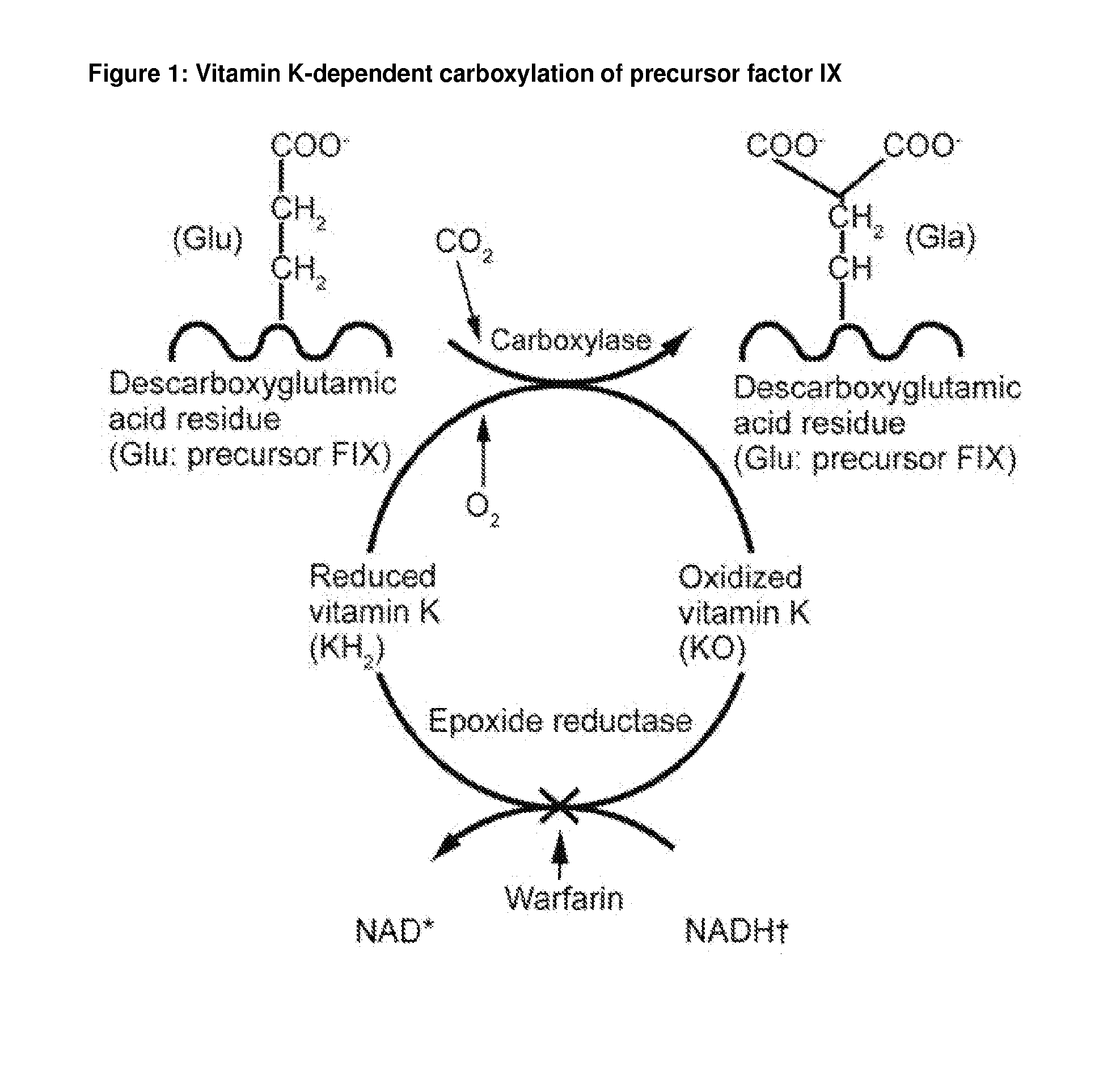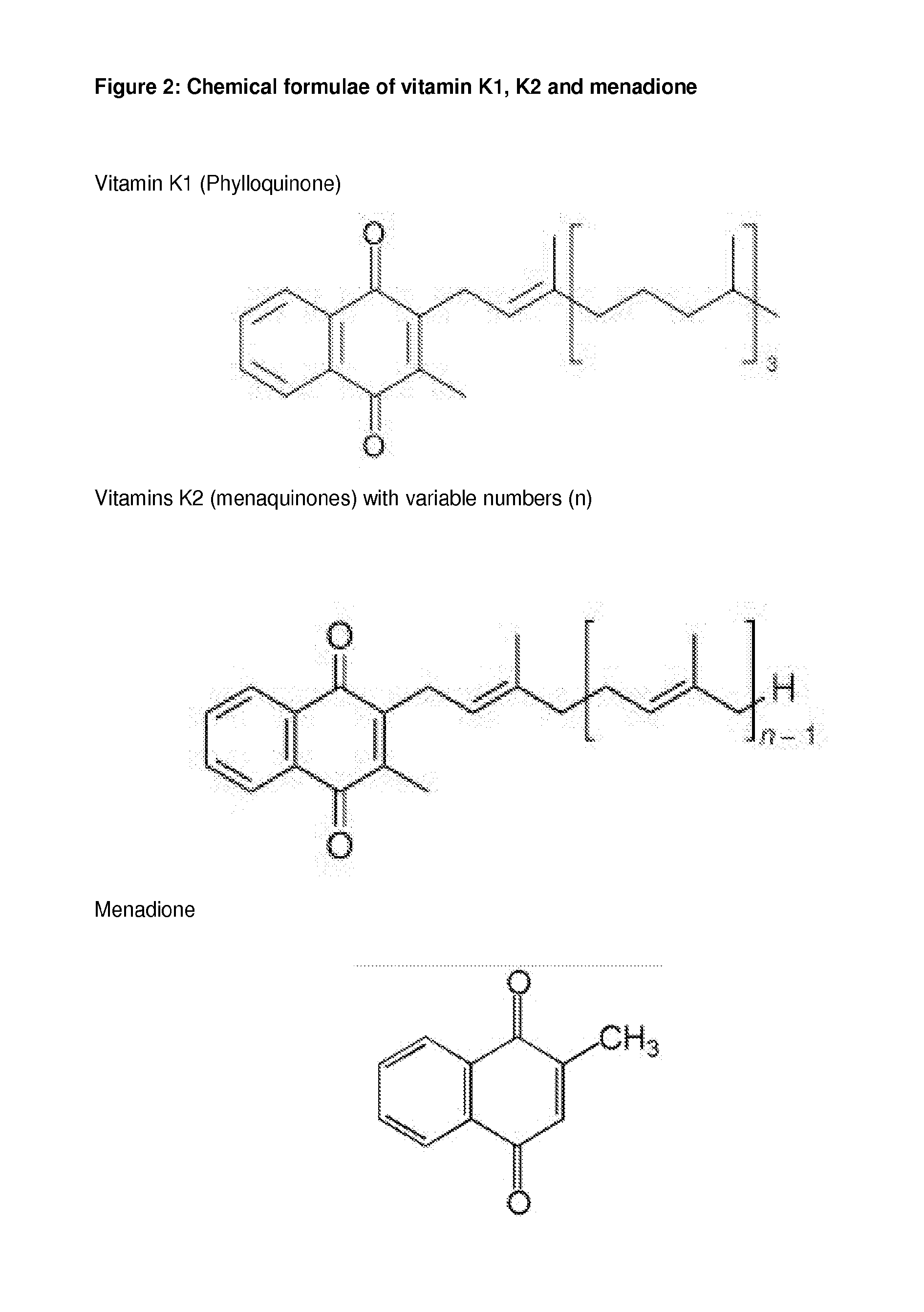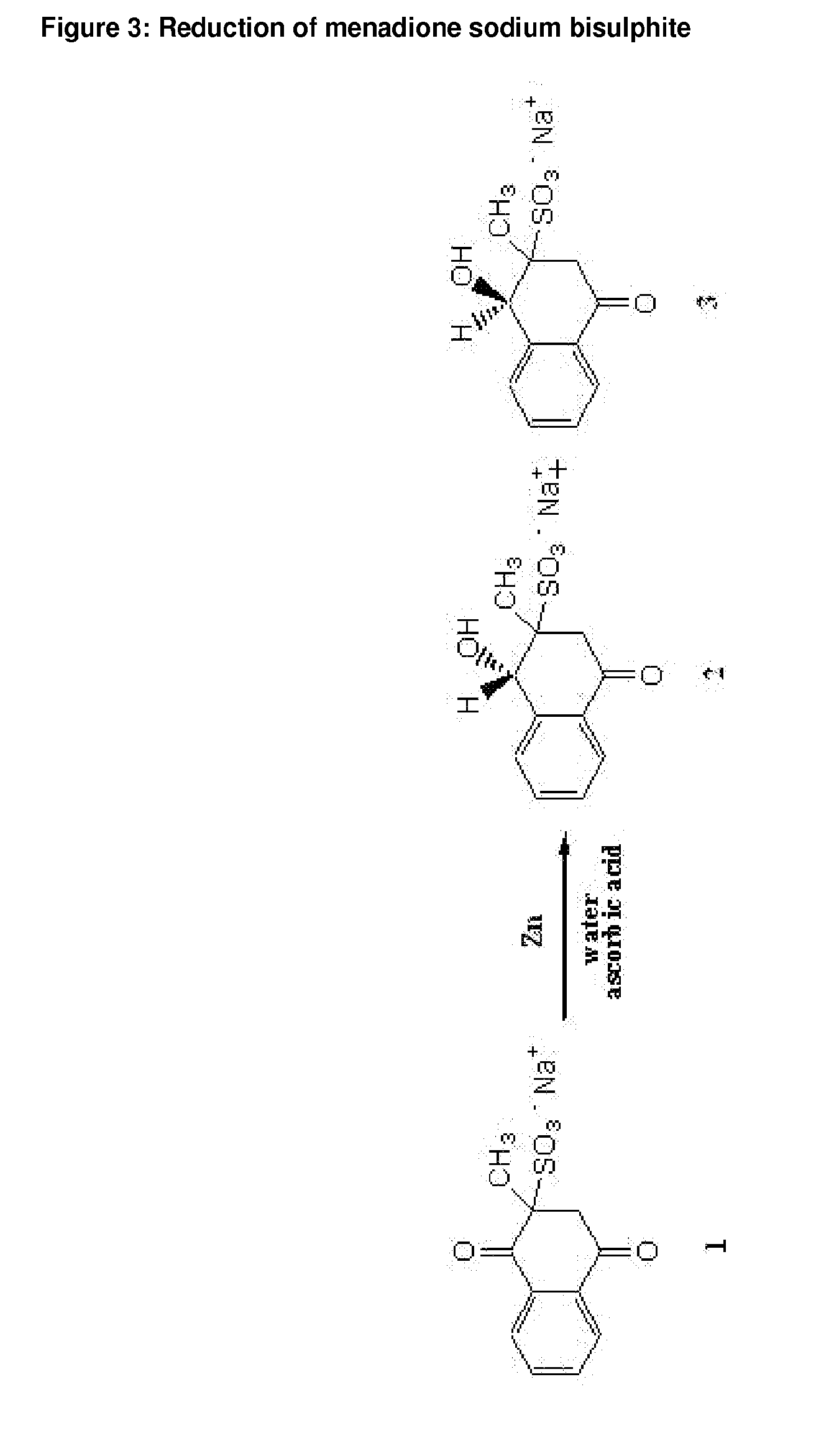Methods of increasing the expression yield of vitamin k-dependent proteins
a technology of vitamin k and protein, applied in the field of methods of increasing the expression yield of vitamin kdependent proteins, can solve the problems of less activity, low expression yield, and low affinity to phospholipid membranes, and achieve the effect of enhancing the viability of cells in fermentation
- Summary
- Abstract
- Description
- Claims
- Application Information
AI Technical Summary
Benefits of technology
Problems solved by technology
Method used
Image
Examples
example 1
Cloning of the Factor IX Construct
[0127]Human coagulation Factor IX cDNA was cloned in-frame 5′ to human albumin cDNA with the two cDNAs separated by a FIX-derived linker sequence. This linker sequence between FIX and albumin was derived from an endogenous FIX sequence involved in FIX activation, thus enabling the cleavage of the fusion protein by the same enzymes (FXIa or FVIIa / TF) which activate FIX.
[0128]The FIX sequence utilised threonine at position 148, the most prevalent phenotype at the site of a known Ala / Thr polymorphism and included a P-3V mutation to optimize propeptide cleavage (not present in the secreted product). The albumin signal peptide replaced that of FIX and the resulting cDNA sequence was codon-optimised for efficient mammalian cell expression. The protein coding sequence was flanked by a HindIII restriction site and a consensus Kozac sequence at the 5′end and an EcoRI restriction site at the 3′ end. The nucleotide is SEQ ID NO:1 [signal sequence by 1-60, prop...
example 2
Transfection and Selection of Clones A2 and A5
[0130]The rIX-FP-PACE / Furin construct was electroporated into CHOK1SV cells and colonies were selected in 96 well plates using commercial glutamine free media. The resultant colonies were then screened for FIX expression and activity and two clones (A2 and A5) with the desired expression / activity profiles were chosen for further development.
example 3
Manufacture of Reduced Menadione Bisulfite (rMSB)
[0131]The procedure involves in situ reduction of menadione sodium bisulphite (MSB) using an aqueous solution of ascorbic acid and catalytic addition of zinc powder. The resulting filtered reaction mixture contains MSB and the two corresponding isomeric reduction products (shown in FIG. 3 as No. 2 and No. 3, the reduced vitamin K), in the presence of ascorbic acid and traces of Zn. This filtrate mixture is used as the final product mixture.
[0132]Ascorbic acid (12.75 g) was dissolved in degassed Milli Q water (100 mL) in a 200 mL measuring cylinder with a fitted stopper.
[0133]Menadione sodium bisulphite (10.00 g) was dissolved in degassed Milli Q water (50 mL) in a 100 mL beaker and added to the ascorbic acid solution. The beaker was rinsed twice with 2×20 mL of degassed Milli Q water into the 200 mL measuring cylinder. The resulting ascorbic acid / menadione sodium bisulphite solution was made up to 200 mL with degassed Milli Q water an...
PUM
| Property | Measurement | Unit |
|---|---|---|
| Fraction | aaaaa | aaaaa |
| Fraction | aaaaa | aaaaa |
| Fraction | aaaaa | aaaaa |
Abstract
Description
Claims
Application Information
 Login to View More
Login to View More - R&D
- Intellectual Property
- Life Sciences
- Materials
- Tech Scout
- Unparalleled Data Quality
- Higher Quality Content
- 60% Fewer Hallucinations
Browse by: Latest US Patents, China's latest patents, Technical Efficacy Thesaurus, Application Domain, Technology Topic, Popular Technical Reports.
© 2025 PatSnap. All rights reserved.Legal|Privacy policy|Modern Slavery Act Transparency Statement|Sitemap|About US| Contact US: help@patsnap.com



